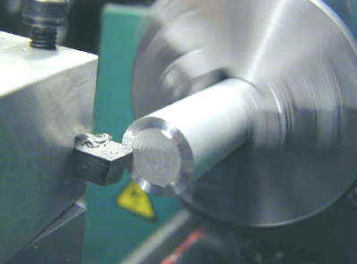What is Facing Operation on Lathe Machine - Difference Between Lathe Facing and Milling Facing | Dajin Precision
Facing in machining is a basic operation can be performed on lathe machine and milling machine, both involve removing material to produce varying machined parts. Other than the difference between lathe facing and milling facing, we'll also check what is facing operation and how does the facing tool work in CNC lathe.

What is Facing Operation on Lathe Machine?
Facing is commonly used in CNC turning and boring, refers to the process of removing material from the end and/or shoulder of a workpiece, uses a facing tool to produce a flat, smooth surface perpendicular to the rotational axis of the workpiece. If the stock has a hole in the center, a half-center should be utilized to stabilize and support the workpiece.
What Factors Affect the Quality of Facing Operation?
Speeds and feeds, dimensions and material of cutting tool, types of material to be machined and the method of workpiece clamping will affect the quality and effectiveness of facing operation on lathe machine. Choose roughing or finishing cutting based on the materials need to be taken off.
How to Use a Facing Tool on Lathe?
After the workpiece is fixed on the CNC lathe and the facing tool is mounted into the tool holder of the lathe carriage, when the tool rotating in the jaws of the chuck, it will feed perpendicularly across the part's rotation axis, to cut the workpiece to required length accurately. CNC machines can provide power feed, which instead of hand feed to obtain smoother surface finish.
What's the Difference Between Lathe Facing and Milling Facing?
1. Lathe facing is done using the turning lathe, while milling facing performed on the milling machine.
2. In lathe facing, the part is rotating and cutting tool is stationary in the same position, while in milling facing, the facing tool rotates against the fixed workpiece.
3. The workpiece is generally cylindrical in lathe facing, while you can face rectangular or odd-shaped material to fabricate parts in cubes and other non-cylindrical shapes.
4. Lathe facing is a type of turning operation, which includes boring, grooving, reaming and more, while milling facing is working reversed to turning.
How to Face the End of a Part?
The first thing you need to do is to set the tool up. Loosen the tool holder, angle a tool out from the end of the stock about 10 to 15 degrees just to give a little bit of clearance on the end. We also need to center the tool bit vertically.
